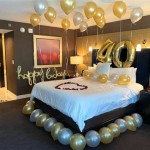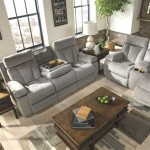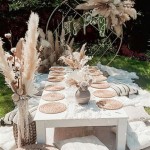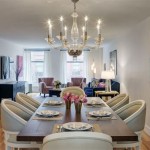How To Decorate a Small Studio Apartment with a Fallout Shelter Aesthetic
Decorating a small studio apartment presents unique challenges, requiring careful consideration of space, functionality, and personal style. Integrating a “Fallout shelter” aesthetic into a compact living area demands a thoughtful and strategic approach. The goal is to evoke the atmosphere of resilient survival and retro-futuristic technology while maintaining a livable and comfortable environment. This article outlines several key strategies for achieving this design objective, focusing on space optimization, material selection, and thematic detailing.
The creation of a convincing Fallout shelter ambiance necessitates a departure from conventional design principles. Rather than striving for brightness and openness, the focus shifts toward creating a sense of enclosed security and utilitarian functionality. This involves embracing darker color palettes, incorporating durable materials, and adopting a minimalist approach to avoid clutter.
Strategic Space Optimization
Maximizing limited square footage is paramount in a studio apartment. When incorporating a Fallout shelter theme, this requirement becomes even more critical, as the intended aesthetic often involves elements that can visually shrink a space. Therefore, innovative storage solutions and multi-functional furniture are essential.
Vertical storage is a key strategy. Shelving units that reach the ceiling provide ample space for displaying thematic items, such as vintage radios, gas masks (deactivated, of course), and survival gear replicas. These shelves can also house essential items like books and clothing, keeping the floor space clear. Opting for modular shelving systems allows for flexibility and customization as needs evolve. Open shelving, while visually appealing, can contribute to clutter if not managed effectively. Closed storage options, such as cabinets or drawers, are better suited for concealing items and maintaining a cleaner appearance.
Multi-functional furniture is another cornerstone of small-space design. A sofa bed provides seating during the day and a sleeping area at night, eliminating the need for a separate bed that would consume valuable floor space. A coffee table with built-in storage can serve as a surface for eating, working, and storing items like blankets and game consoles. Consider foldable or nesting tables that can be easily stowed away when not in use, further maximizing available space. A Murphy bed is another option for maximizing space, allowing the bed to be tucked away during the day.
Consider using room dividers to create distinct zones within the studio apartment. A curtain, bookshelf, or strategically placed screen can separate the sleeping area from the living area or create a makeshift entryway. This visual separation helps to define the different functions of the space and makes the overall apartment feel larger and more organized. When selecting a room divider, consider the overall aesthetic of the Fallout shelter theme. A metal mesh screen or a curtain made from repurposed canvas could enhance the industrial and utilitarian feel.
Mirrors are a classic tool for creating the illusion of space. Strategically placing a large mirror on a wall can reflect light and visually double the size of the room. Consider placing a mirror near a window to maximize the amount of natural light that enters the space. The mirror's frame can also contribute to the overall theme. A metal or distressed wood frame would complement the Fallout shelter aesthetic.
Material Selection and Color Palette
The choice of materials and colors plays a crucial role in establishing the desired Fallout shelter ambiance. The goal is to evoke a sense of durability, functionality, and a touch of retro-futuristic charm. This involves favoring industrial materials, muted color palettes, and distressed finishes.
A predominantly neutral color palette is essential. Grays, browns, beiges, and off-whites should form the foundation of the design. These colors evoke a sense of austerity and resilience, reminiscent of concrete bunkers and weathered metal surfaces. Accent colors, such as olive green, rust orange, and faded yellow, can be incorporated sparingly to add visual interest and personality. Avoid bright or vibrant colors that would detract from the overall atmosphere.
Industrial materials should be incorporated whenever possible. Exposed brick, concrete, and metal are ideal choices. If the apartment lacks these features, consider using faux brick panels or metal accents to create the desired effect. Metal pipes can be repurposed as shelving supports or decorative elements. Concrete can be imitated with textured wallpaper or paint finishes. When selecting furniture, look for pieces that incorporate metal frames or hardware. Wooden furniture can be distressed or painted to give it a weathered and aged appearance.
Lighting is another key element in creating the right atmosphere. Opt for warm, subdued lighting that mimics the glow of incandescent bulbs or vintage lamps. Avoid bright, harsh lighting that would feel out of place in a Fallout shelter environment. String lights with Edison bulbs can add a touch of retro charm. Consider using lamps with metal shades or cages to enhance the industrial aesthetic. Blackout curtains or blinds can further contribute to the sense of enclosure and security.
Textiles should be chosen to complement the overall theme. Canvas, burlap, and denim are good choices for upholstery, curtains, and rugs. These materials are durable, practical, and have a slightly rough texture that fits well with the Fallout shelter aesthetic. Avoid delicate or luxurious fabrics like silk or velvet. Instead, focus on materials that evoke a sense of resilience and functionality. Throw blankets and pillows in muted colors and with simple patterns can add a touch of comfort and visual interest.
Thematic Detailing and Artifacts
The final touch in creating a convincing Fallout shelter-themed studio apartment is the incorporation of thematic details and artifacts. These elements add personality, depth, and a sense of authenticity to the space. The focus should be on incorporating items that evoke the imagery of a post-apocalyptic world, while still maintaining a sense of livability and comfort.
Vintage radios and communication equipment are iconic elements of the Fallout universe. Sourcing antique radios, telephones, and other communication devices (or convincing replicas) can significantly enhance the thematic accuracy of the design. These items can be displayed on shelves, tables, or even mounted on walls. Consider adding wires and cables to create a more realistic and cluttered appearance. Remember to prioritize safety and disconnect any potentially hazardous electrical components.
Maps and charts are another common element in post-apocalyptic settings. Displaying vintage maps of the local area or fictional maps of the Fallout universe can add a sense of exploration and discovery to the space. These maps can be framed and hung on the walls or used as decorative elements on tables. Consider aging the maps by staining them with tea or coffee to give them a weathered appearance.
Propaganda posters and signage can be used to add a touch of retro-futuristic irony. Posters depicting slogans like "Work Hard, Stay Vigilant" or "Atom for Peace" can create a sense of humor and social commentary. These posters can be printed online or purchased from specialty retailers. When selecting posters, consider the overall tone and message of the design. The goal is to create a sense of irony and satire, rather than promoting any particular political ideology.
Repurposed and recycled items can add a sense of realism and resourcefulness to the space. Items like old metal containers, toolboxes, and salvaged wood can be repurposed as storage containers, planters, or decorative elements. This not only enhances the thematic accuracy of the design but also promotes sustainability and environmental awareness. Consider painting or distressing these items to give them a weathered and aged appearance.
Finally, consider incorporating elements that reflect the personal interests and hobbies of the occupant. This could include books, games, movies, or artwork that fit within the overall theme. For example, a collection of science fiction novels, a board game based on a post-apocalyptic world, or a piece of artwork depicting a desolate landscape could all add personality and depth to the space.
By carefully considering space optimization, material selection, and thematic detailing, it is possible to transform a small studio apartment into a convincing and comfortable Fallout shelter-themed living space. The key is to strike a balance between thematic accuracy and practicality, creating a space that is both visually appealing and functional.

6 Clever Shelter Designs To Help Inspire Your Interiors

Transforming Your Hdb Household Shelter Indesign Live Interior Design And Architecture

Transforming Your Hdb Household Shelter Indesign Live Interior Design And Architecture

6 Clever Shelter Designs To Help Inspire Your Interiors

Not Just Basements At Fallout 4 Nexus Mods And Community

6 Clever Shelter Designs To Help Inspire Your Interiors

Apartment

20 Top Room Decorations For Man Gamers Ideas In 2025

Transforming Your Hdb Household Shelter Indesign Live Interior Design And Architecture
If You Had To Live In A Small Room For The Rest Of Your Life What Would Want Quora
Related Posts







